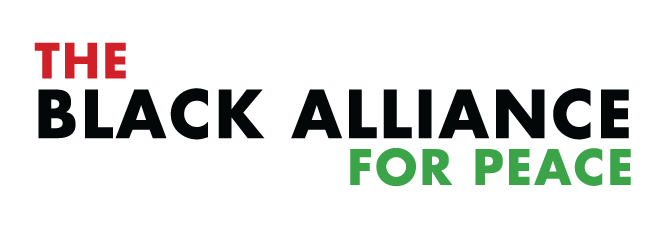On May 1, 2021, on International Workers’ Day, the Black Alliance for Peace salutes the Haitian worker and applauds their long history of struggles for Black freedom and the universal rights of workers.
Haiti is often derided as the “poorest country in the American hemisphere.” Yet, we know it was the enslaved labor of Africans in the French colony of Saint-Domingue (now the Republic of Haiti) that contributed to the wealth of the European world, fueling the emergence of capitalism.
The resistance of those Africans against slavery and capitalism also provided a beacon of hope for the enslaved, peasants, and workers—both Black and non-Black—throughout the world. From small acts of subversion to slow-downs, Africans resisted slavery from the moment they arrived in the New World. In the 17th and 18th centuries, escaped Africans—maroons, or mawons in Haitian Creole—formed insurgent communities in remote, mountainous areas. Among the most famous mawon was François Mackandal, an African who in 1757 devised a plot to poison the white planters and burn down the plantations. He was captured and publicly executed as a warning to other Africans.
In 1791, a plot against slavery led by Boukman Dutty and Cecile Fatiman was launched at the famous Bois-Caiman ceremony. In the short term, their plot would fail, but it lit a fire that could not be extinguished. It sparked 13 years of revolt and counter-revolt that we now know as the Haitian Revolution. The Revolution’s heroes—Toussaint Louverture, Jean Jacques Dessalines and others are well known—but its success depended on the struggle of the Haitian masses. Tens of thousands of unknown enslaved Africans defeated Napoleon’s forces, ended slavery and established the Republic of Haiti: the first Black Republic in the Hemisphere, a place where all enslaved Africans would be granted freedom, and a potent symbol of pan-Africanism.
Yet, Haiti’s resistance did not end in 1804. With the establishment of the Republic, Haiti’s Black elites became the primary obstacle for freedom, dignity, democracy and economic sovereignty for Haiti’s African peasant classes. Peasant insurgencies occurred in 1807 and 1811. In 1844, a “suffering army” of peasants in southern Haiti were at the forefront of the Piquet Rebellion’s demand for social equality, radical democracy and the rights of small landholders.
In the 20th century, Haitian peasants initiated the armed resistance against the U.S. military occupation (1915-1930). A brief insurgency led by peasant insurrectionists, known as cacos, lasted from July to November 1915 before it was crushed by the Marines. Despite U.S. Marine efforts to arrest or assassinate suspected cacos, their insurgency was renewed under the leadership of Charlemagne Péralte and later Benoît Batraville. Péralte was assassinated on November 1, 1919—and, like Makandal, his corpse was used as a deterrent to future rebellion. Batraville was assassinated on May 20, 1920, his death effectively marking the end of the caco insurgencies. Rebellion against the occupation would be taken up by Haitian students whose protests in 1929 led to a general strike combining both workers in Port-au-Prince and other cities and peasants throughout the country. These new protests led to the withdrawal of U.S. troops in 1934.
In 1934, the Haitian Communist Party was formed by writer Jacques Roumain (author of the magnificent, fictional homage to Haitian labor, The Masters of the Dew) and others. Inspired in part by Roumain, Haiti Marxists, including Jacques Stephen Alexis, René Depestre and Gérald Bloncourt were behind the “Revolution of 1946” that saw the overthrow of the tyrannical regime of Élie Lescot, after student protests and nationwide strikes. During this period the Parti Communiste Haïtien was revived and the Parti Socialiste Populaire was organized, as was the Mouvement Ouvrier et Paysan, the largest labor organization in Haiti’s history led by the charismatic Daniel Fignolé.
While the United States and Haiti’s military forces remained powerful influences in Haiti’s political life, this movement of workers and peasants led to a brief, progressive period in Haiti’s politics before the emergence of the dictatorship of Francois and Jean-Claude Duvalier (1957-1986). In 1961, communist Jacques Stephen Alexis led a coup against Duvalier that ultimately failed. Alexis was brutally tortured and murdered for his efforts. The Duvalier regime would not fall for another two decades, after riots against poverty and student protests in the early 1980s led to a 1986 grassroots uprising. This unseated the Duvalier regime and eventually led to the coming to power of Famni Lavalas and Jean-Bertrand Aristide.
In the decades since, Haitian workers and peasants have continued a ceaseless fight against both the Haitian aristocracy and the imperial powers for sovereignty, dignity and freedom. Today, Haiti’s laboring masses continue this tradition of protest in their attempts to unseat Jovenel Moïse and to destroy the imperialism of the United States, the Core Group, the OAS and others.
To mark International Workers’ Day, the Black Alliance for Peace expresses its solidarity with the modern-day struggle of the Haitian worker—and our gratitude for Haiti’s history of resistance.
Banner photo: Illustration depicting combat between French and Haitian troops during the Haitian Revolution. (Histoire de Napoléon, by M. De Norvins, 1839)

